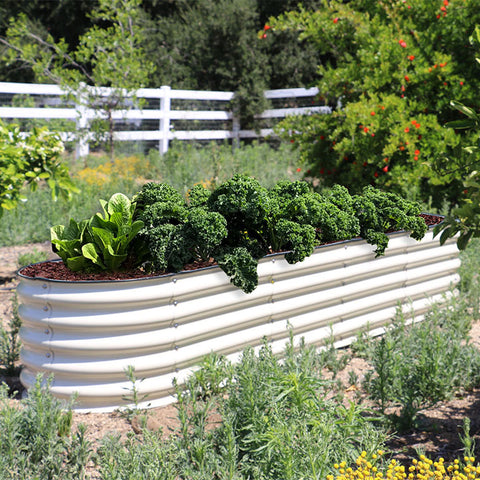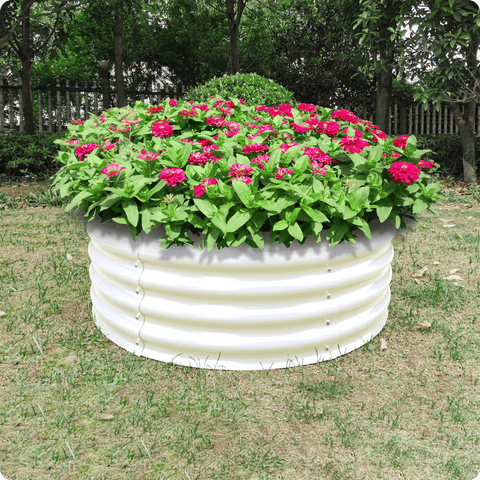8 Tips For Preparing Your Raised Garden Beds For Winter
For those who like to grow their own vegetables, it is a good idea to have a raised garden bed. They are easy to maintain, large enough to grow a lot of vegetables, and they look beautiful. It's one thing to put a garden on a bed, but how to prepare a raised garden bed for winter?

8 basic steps
- Cleaning
You need to remove all used plant and vegetable substances from the finished growing season - leaving them in the soil looks messy, and it will introduce potential diseases and fungi into your soil.
You can remove plants and destroy them, or you can add them to the compost pile to provide nutrients for next year's harvest, as long as they are not sick.
In addition, take time to clean up a very good weed on the plot and ensure that no invasive plants can take root in quiet months.
- Covering, covering, covering
- Trim and trim
Many plants will benefit from good, clean pruning at the beginning of the cold season to help them start the next season as healthily as possible.
Some plants prefer autumn pruning than others; Herbs are obvious candidates, rhubarb and asparagus will like haircuts.
Some soft fruits, such as raspberries and blueberries, will continue to grow until winter, so keep these guys until spring.
- Divide the bulb
If you have flowers growing, autumn is the time for them to prepare for the next season's growth. Lift the bulbs and separate them for planting elsewhere. Now it is better to plant bulbs for spring.
- Composting
You may think that winter is not the time to fertilize plants, but this is actually a good opportunity to add some nutrients to the soil so that it can continue to release its important benefits.
Another good reason to add compost now is that everything you compost in summer will now decay well and be ready to be put into the soil, which will make room for winter products.
You can add all used vegetables as well as fallen leaves and other green (or brown) substances to the compost.

- Soil preparation
It seems that digging, weeding and turning should be the work of spring, but starting to work now will mean you have less to do in spring.
Now adding compost, dung or fertilizer will also greatly help the soil; The time between now and planting in the next season will allow nutrients to spread through the soil.
If this is the first year that you use the new bump, you may find that the soil level decreases slightly at the beginning, so it is a good idea to add a little more at this stage.
- Cover up
Once you have removed all the invaders, fertilize your soil and gently turn it over, you can really "put it on the bed" - cover the whole bed with weeds covered with fabric, which will allow water to penetrate, but will prevent sunlight from reaching the soil and help any weeds grow.
This is a good time to lift your feet for a few weeks, enjoy some time away from the garden, and spend time in a warm place!
- Roof or no roof?
If you want to continue growing vegetables in winter, you can cover the roof on the convex bed to protect them from the worst weather and make them a little warmer.
However, please note that this will prevent important sunlight from entering your plant, so make sure to use a perspective mask.
The Best Winter Vegetables
Even in winter, it is also suitable to grow vegetables because the soil is slightly warmer than the soil exposed in the garden or distribution. You can even grow salad in winter!
- Salad
You can plant salad seeds at the end of the growing season, about September, and harvest them from November to January. No matter how warm the soil is, these small thin leaved plants cannot cope with severe frost well.
- Radish
Sow carrots in September and enjoy them in November or December. Add a little wool or mulch to the soil surface to keep the roots warm.
- Leek
You can plant leeks early in the season, about in May, and you can harvest them from November.
- Bean sprouts
You will plant another vegetable in the early season (about April/May), and your bean sprouts should be ready to eat between November and March. These guys actually become sweeter after one or two frosts, so don't worry about them too much in the cold.
- Spinach
Although it is a thin leaf plant, spinach is actually very cold resistant. You can plant it in November and pick it between January and March.
- Kale
This nutritious vegetable is an excellent supplement to winter gardens. Plant seedlings in summer, and then you can almost ignore them until November or December when they start to produce.

Epilogue
Winter is often called the "hunger gap" because gardens don't produce as much food as they do in summer, and most things die.
However, there is still work to be done and some vegetables can still be obtained from the winter bed.
Find out how to prepare raised garden beds for winter so that they will be at their best when the growing season comes next year, and you can enjoy growing vegetables for a long time.
